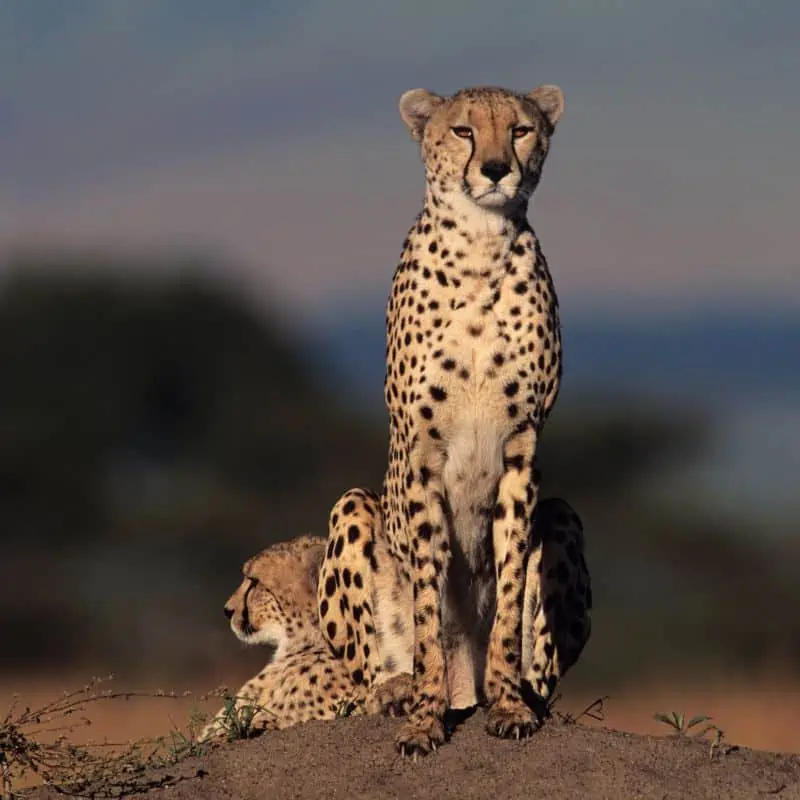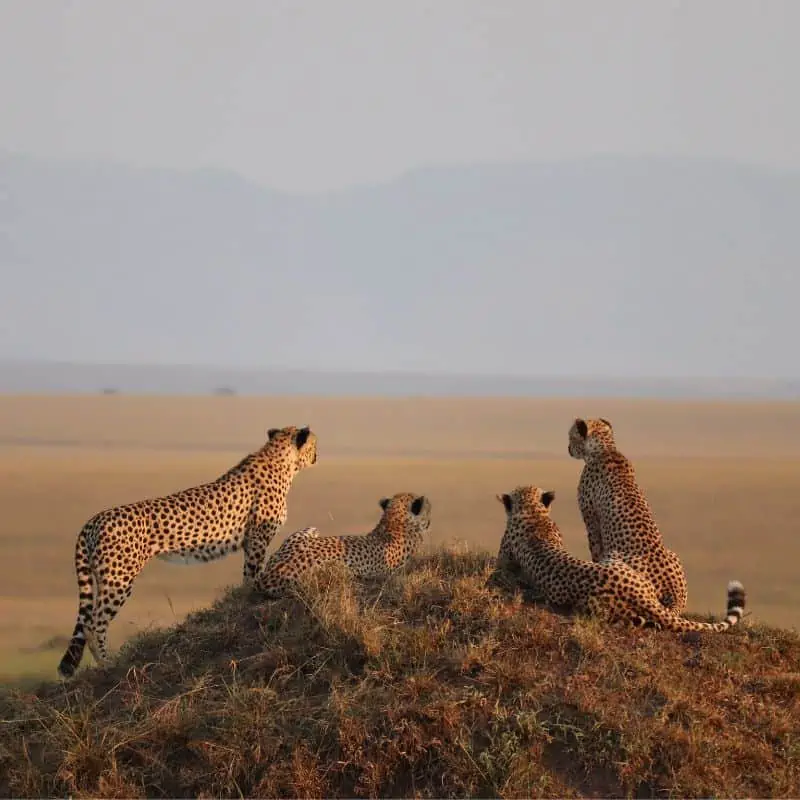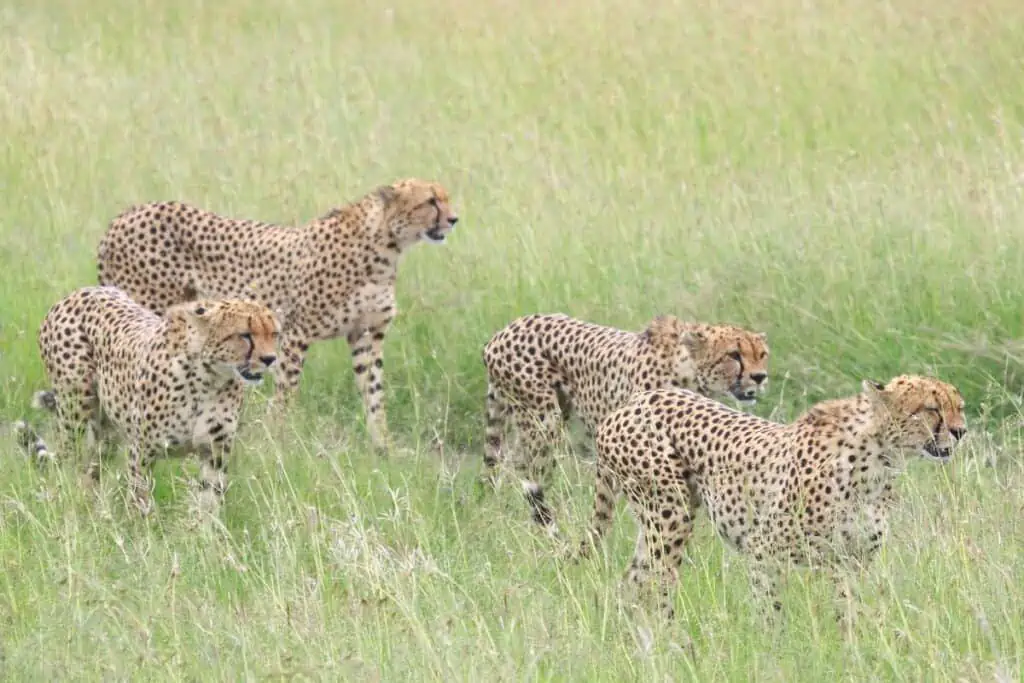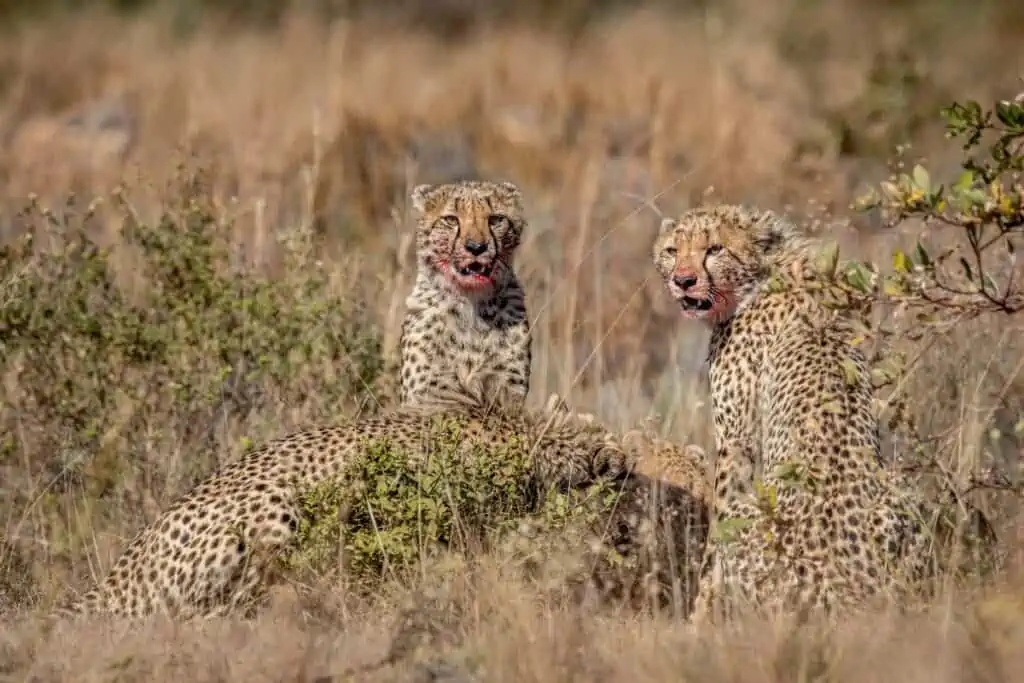If you see multiple cheetahs together, you may be confused about what to call them. So, before we examine their complex social lives, what is a group of cheetahs called?
A group of cheetahs is called a coalition. It is composed of all males numbering two to three individuals and (as observed in the Masai Mara group, Tano Bora) up to five. Aside from lions, cheetahs are the only other big cats that form these groups.
Initially, these coalitions are made up of siblings but can open up to other nomadic males looking for a group to join.
Coalitions can be lifelong or temporary bonds based on the individual members’ relationship.
The social lives of cheetahs are anything but simple, so let’s take a look further.

Why call it a coalition?
A coalition, by definition, is a temporary alliance of sorts whose main purpose is to achieve aligned goals through combined efforts or actions.
This is a perfect definition of coalitions formed by cheetahs. These majestic cats live and hunt together when it serves their best interest. Only the cheetah and lion form these social bonds of all the big cats in the wild.
Cheetahs have a vested interest in forming groups for protection and hunting purposes. These coalitions can be broken up, augmented by new members, or kept for the entirety of the cats’ lives as seen fit.

Exclusively for male members and by invitation only
Coalitions are exclusively composed of two to three males. Coalitions numbering four or five individuals are considered a large collection of animals and are very rare. As mentioned earlier, the famed fast five (a.k.a. Tano Bora) were a prime example of this before two of the five brothers passed away in early 2022.
Females remain nomadic for the rest of their lives when they reach sexual maturity. Some coalitions in their embryonic stage may feature a female, but this is only because it may be a litter of cubs that decided to band together for mutual survival.
Eventually, the females will drift away, searching for other hunting opportunities and potential mates.
It is not uncommon for unrelated males to form a coalition. Usually, solitary males will hook up with another male or pair of males and tag along until fully accepted into the fold.
When this happens, a hierarchy is established where the original members have more rights than the newcomer.
This social structure changes when the most dominant male is challenged, injured, or gets too old to hold the coalition together.

Three reasons why cheetahs form coalitions
There are three main reasons why cheetahs form coalitions: to acquire and/or defend their territory, for hunting cooperation, and for companionship.
1. Acquisition and protection of their territory
The main reason male cheetahs form a coalition is to better protect their territory.
Male cheetahs are the smallest of the big cats in the African Savannah. Alone, a single cheetah has no hope of protecting its territory. A pair or trio of cheetahs has a better chance of protecting their territory from other coalitions.
This is the one instance when cheetahs become very aggressive. Coalitions protecting their territory often kill their rivals if they choose to fight.
Thankfully, that is few and far between as these animals would rather evade conflict than engage in violence.
The usual thing that would happen is a display of courage by running up to the rival, hissing, spitting, and thumping the ground.
These display tactics make the cheetah look and sound more frightening than they are. This tactic also prevents physical confrontation and allows the invasive coalition to reassess the risks involved if things escalate further.

2. Hunting cooperation
Increased numbers also increase the likelihood of a successful hunt. Cheetahs are credited as one of the most successful predators, with a very high hunting success rate compared to other predators. Even alone, a cheetah can easily outrun, tackle, and subdue prey.
The problem is when the hunt is finished. Cheetahs overheat during the pursuit and need to cool down before partaking in the meal. This shortens their window of opportunity to feed before opportunistic scavengers come and take their kill away.
A coalition of cheetahs can defend their meal by taking turns driving away some scavengers while the others feed on the kill. As soon as one coalition member has had his fill, he can take the place of the earlier defender until everyone has had their bellies filled.
3. Companionship
Lastly, coalitions are often formed by brothers from the same litter. The coalition may start with some female members but as soon as they hit sexual maturity, leave with only the males are left behind.
A coalition can grow or reduce in numbers based on the relationship of its members. Coalitions don’t necessarily have to be composed of brothers. Unrelated, nomadic males may join the coalition at any time and get accepted.
Final thoughts on cheetah coalitions
Coalitions of cheetahs improve each cat’s chances of survival.
Cheetahs are specialist hunters with a specific body type designed for only one purpose: speed. This unique physique almost nullifies the cheetah’s ability to fight rivals or bigger animals.
Therefore, it’s only logical for a cheetah to look for others to team up with.
FAQs
Why are female cheetahs nomadic?
Female cheetahs have territories that cover a wide area. This ensures they will always have prey to catch for themselves and their cubs.
This also allows female cheetahs to meet different coalitions and mate while preventing inbreeding.
Why do female cheetahs mate with multiple coalition members?
A female cheetah may allow multiple males from the same coalition to mate with her to prevent her cubs from falling victim to infanticide in the future.
With each male in the coalition thinking, she is caring for their cubs. The males have no choice but to protect each one to ensure their genetic survival.
